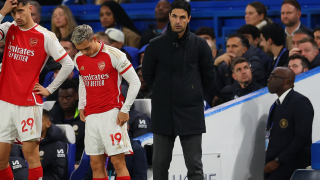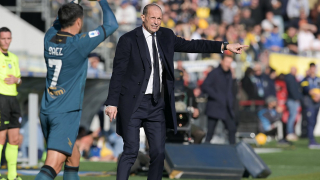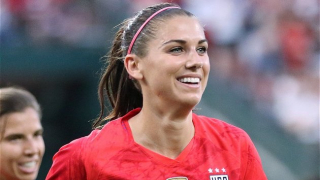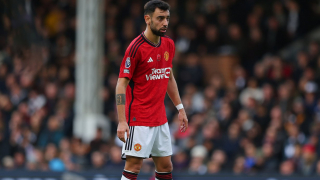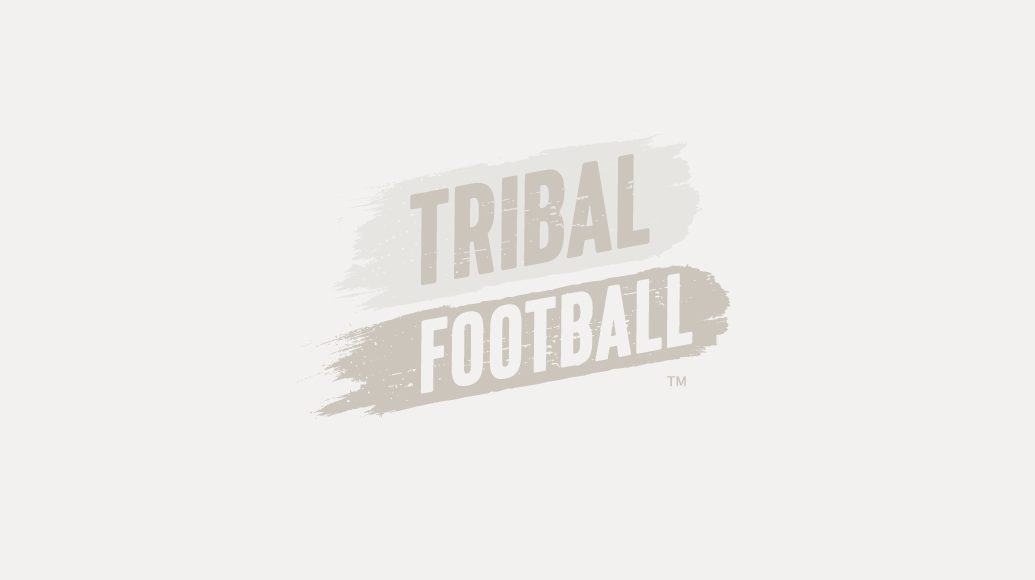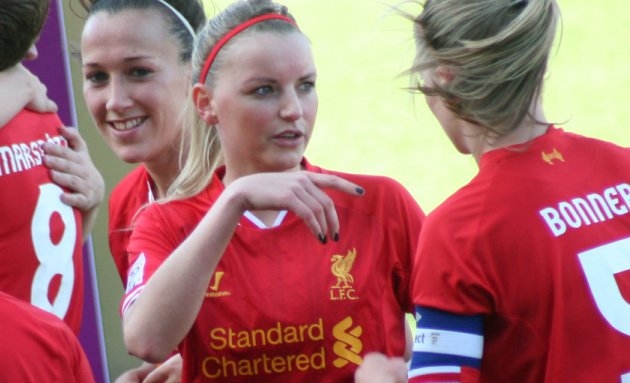This week, we review the second edition of the very high quality and interesting Women's Football Benchmarking Report (2022), issued by FIFA. We also review the 2022 Copa Libertadores Femenina competition in South America that finished in late October.
2022 FIFA Women's Football Benchmarking Report
In late October, FIFA issued its second edition of the Women's Football Benchmarking Report, entitled Setting the Pace, that again was conducted by Deloitte Consulting for the second consecutive year. This column reviewed the report last year (see: The Week in Women's Football: Review of FIFA survey; Canada, USWNT rosters for Tokyo - Tribal Football). This report again was outstanding and focused on five key elements of the game:
- Sporting
- Governance
- Financial Landscape
- Fan Engagement
- Players
The report examines 30 women's leagues around the world and 294 women's clubs.
The 30 women's leagues who participated for this edition were:
- Argentina
- Australia
- Brazil
- Cameroon
- Chile
- China PR
- Colombia
- Costa Rica
- Denmark
- England
- France
- Germany
- Hungary
- Iceland
- Israel
- Italy
- Japan
- Korea Republic
- Mexico
- Netherlands
- New Zealand
- Nigeria
- Norway
- Portugal
- Russia
- South Africa
- Spain
- Sweden
- Switzerland
- United States
Note: Portugal was new in 2022 and replaced Thailand from the 2021 report.
The Methodological Approach is described as follows in the report:
"To provide a thorough and comprehensive analysis of the elite women's football landscape at national level in this second edition, we again surveyed 30 top-tier women's football leagues and their member clubs in respect of the 2019/20 (or 2020) and 2020/21 (or 2021) seasons, asking questions on a range of topics….As in the previous edition of this report, we had significant interaction with leagues and their member clubs, who were contacted to complete the survey to provide us with the required data. We again achieved an exceptionally positive response rate, and in total: all 30 leagues responded and 82% (294) of clubs responded."
"For the purposes of comparison, financial data has been converted into USD using the average exchange rate for calendar years 2020 and 2021" (Pages 8-9).
This writer compiled a table (below) with some various interesting metrics from the 15 pages featuring data on each of the 30 featured countries women's leagues. The table below shows by country the number of teams in each league, those that are stand-alone clubs (not affiliated with a men's side), the portion of players on salary and the percentage of professional versus amateur players in the league.
# of Teams # of Stand-alone % of players on salary %Pro/Amateur
- Argentina 21050%56% vs. 44%
- Australia 10199%98% vs. 2%
- Brazil 16388%83% vs. 17%
- Cameroon 1200%NA
- Chile1505%28% vs. 72%
- China PR107100% NA
- Colombia 17080%68% vs. 32%
- Costa Rica83NA21% vs. 79%
- Denmark8170% 65% vs. 35%
- England120100%90% vs. 10%
- France10295%85% vs. 15%
- Germany129100%91% vs. 9%
- Hungary81NA69% vs. 31%
- Iceland100 NANA
- Israel9890%84% vs. 16%
- Italy122 90%24% vs 76%
- Japan11464%60% vs. 40%
- Korea Republic 86100%NA
- Mexico18085%95% vs. 5%
- Netherlands 93 NA69% vs. 31%
- New Zealand840%0% vs. 100%
- Nigeria14295%89% vs. 11%
- Norway105NA76% vs. 24%
- Portugal169NANA
- Russia102100%98% vs. 2%
- South AfricaNANANA28% vs. 72%
- Spain163100%99% vs. 1%
- Sweden127100% 94% vs 6%
- Switzerland10635%28% vs. 72%
- United States126100%99% vs. 1%
Note: Portugal is new for 2022, replacing Thailand from the first edition of this report in 2021, while the other 29 leagues were profiled in 2021 (Pages 67-81).
For the clubs that provided data, approximately one quarter (26%) of head coaches across all leagues were women, with South Africa (57%), Korea Republic (57%) and England (56%) having more than half of their top league teams coached by females. On the other end of the scale, Norway, Netherlands, Iceland and Germany had no female coaches in their top league while Argentina, Cameroon, Chile, Colombia, Costa Rica, Denmark and Israel had 20% of their teams or fewer with female coaches (Pages 67-81).
The average number of teams per league were 12: ranging from eight clubs in five different leagues to 21 in the Argentinian Campeonato Femenino. The average length of season in days was 233 and the average number of matches played per league was 138, ranging from 74 in the Australian Liberty A-League Women to 336 in the Mexican Liga MX Femenil (not shown in the above table—Pages 10-11).
The majority of clubs (77%) in which more than half of the players are professional, whereas 23% of clubs have mainly amateur players (not shown in the table above). At league level, this results in 19 leagues having more than half of the clubs mainly made up of professionals and six mostly made up of amateurs (shown in the above table).
Other interesting findings from the 30 leagues included that all of the nation's women's leagues had player unions, except for Costa Rica, while for China and South Africa the question was not applicable (Pages 67-81).
The FIFA Report had a number of conclusions in the Executive Summary on pages 4-7, which have more details later in the report:
Teams that had won the league in the last three years had several common characteristics, including having:
• a written strategy for women's football (78% for those that had won the league in the last three seasons vs. 65% for those that had not)
• players that earned a higher gross average salary (USD 16,000 v. USD 13,000);
• a greater number of sponsors with a value given to the women's football team (8 v. 6.2)."
I have to say that these two Deloitte reports for FIFA (2021 and 2022) have some fantastic data but it continues to seem a little spurious to look at those teams who have won league titles over the past three seasons versus those who have not, particularly when you have countries that have a long history of one of two teams putting together a string of titles such as in France (with Olympique Lyon winning 15 of the past 16 titles, interrupted only by Paris St. Germain winning two years ago), Germany (with VfL Wolfsburg with 7 and Bayern Munich with 3, winning the last 10 league titles, with the other side finishing second in the last 8 years) and Denmark (Brondby on 12 titles and Fortuna Hjorring with 7 have monopolized the league title between them since 2001-02, until HB Koge won back-to-back crowns in 2020-21 and 2021-22). The issue of only 2-4 sides having serious title aspirations each year, depending on the league, is a problem in most European women's leagues in general, with a sizeable competitive gap with the other teams. The NWSL is always noted by players for its parity among most teams every year and we don't still don't see that in European leagues at this point in time, though the WSL is rapidly becoming more competitive from top to bottom.
Other interesting findings in the Executive Summary include:
"Leagues that have cup competitions also present an opportunity for additional commercial inventory to be sold (e.g., title sponsorship). In the 2021/22 (or 2022) season, 80% of leagues had a cup competition, with cup competitions running for an average of 156 days."
There were a number of characteristics that were more prominent in stand-alone clubs than affiliated clubs. These include having:
• A higher number of average sponsors (17 for stand-alone clubs vs. six for affiliated clubs)
• Higher revenue (USD 395,000 v. USD 343,000) in the 2020/21 (or 2021) season.
However, there tended to be a lower:
• Proportion of players that were professional in stand-alone clubs (66% vs. 71%).
• Number of full-time equivalent (FTE) staff (five v. seven).
"Commercial revenue is the largest self-generated revenue source for most women's clubs, accounting for 56% of revenue. Clubs recorded year-on-year commercial revenue growth of 33%.
"This year, there are encouraging signs of growth, with all key revenue lines for clubs in aggregate (and at league level) experiencing growth. Seven percent of clubs generated more than USD1,000,000 of revenue from matchday, broadcast, commercial and prize money sources.
"The number of leagues with a title sponsor has grown, with 77% of leagues having a title sponsor, compared with 66% of leagues in the previous edition of this report. The average number of league sponsors has risen from 2.9 in the 2021 report to 3.6 in the 2022 edition." (Chart 9 on Page 32). "The industry composition of title sponsors is similar to the industry composition of sponsors at club level, with financial services being the largest industry" (See chart below).
League title sponsors by industry segment %
Financial services 40%
Other 18%
Energy/utilities 13%
Gambling 9%
Construction and real estate 5%
Industrial Goods 5%
Retail 5%
Telecommunications 5%
(Source: Chart 10 on Page 31).
"Player wages continue to be the most significant cost for clubs overall. Player costs as a proportion of a club's total cost base ranged from 35% to 45% (with an average of 41%) in 2020/21 (or 2021)" (Page 6).
"International transfer fees in professional women's football hit a new record of USD 2,100,000 in 2021, an increase of 73% on 2020. Despite this growth, it should be noted that the five largest transfers paid in 2021 accounted for almost 60% of total spending, and only 4.4% of professional transfers involved the payment of a fee. (Page 6)."
This is one area that we should see grow substantially over the next few years, with more sponsorship investment in teams, leagues and even players - England's Chloe Kelly was offered a 2 Million Pound Sponsorship with Land Rover shortly after her Women's EURO overtime goal lifted England over Germany 2-1 in the Final; though the deal has not of yet been finalized. This is groundbreaking as women footballers have primarily attracted sponsorship from women's brands or for products targeting women consumers, but Land Rover is a mainline brand. The fact that the automotive company has such faith in a women's footballer—when they would have spent the same amount with a high-profile movie or television star or a male athlete—will hopefully attract other mainline sponsors to clubs and thus provide more funds for squad building through transfer fees. Also, for this to happen, players will have to be signed to longer contracts rather than mainly—even full internationals—one-year contracts, with the result that they are always looking for new clubs to move to (sometimes in other countries), and thus don't have an opportunity to build long-term relationships with sponsors and fans, which we have talked about in past columns.
"Having player representation [via a union or other advocating association] can be a positive force in improving player welfare. Where leagues have player representation (27 or 90%), almost half have minimum salary requirements compared to a third for those without. The power of collective bargaining is clear, with leagues that have such agreements (six or 20%) all having minimum salary requirements, compared to only a third for those without" (Page 7).
"The average number of players who have a written contract and receive a salary is 20 across all clubs. However, there is significant disparity across clubs and leagues. Of those who receive a salary, the average number of players who have football as their primary source of income was 17, again with significant disparity between clubs and league averages" (Page 7).
Again, as we discussed above with transfer fees, that is a solid number and hopefully the dollar values will increase, if not the number of players on salary, as some countries bring teenagers as young as 15-16 into their squads from youth or academy teams. This again should improve with the increase in funds coming from fan attendance, television and media contracts, sponsors and FIFA, regional confederations and national associations.
"Seventy-three percent of leagues have regulations limiting the number of foreign players allowed per club, whilst 37% of leagues have home-grown player quotas. These regulations attempt to ensure that domestic players do not have their development opportunities restricted by an influx of foreign talent. However, having foreign talent gives domestic players the opportunity to compete against international players outside of national team matches, often raising the standard of the league" (Page 7).
"Investment in youth structures (e.g., academies) can provide a pipeline for generating home-grown talent and reduce growing transfer costs. Clubs that were 'part of a wider football club' that includes an affiliated men's team (with the same or a different name, but part of the same legal entity) were much more likely to have an academy that included girls (80%) compared to those that were stand-alone" (Page 4).
"In total, only 35% of all clubs offered a season ticket featuring the women's team, whilst 25% of all clubs offered a season ticket for the women's team only" (Page 6).
The FIFA Report included interesting charts and tables, including the following:
Proportional of clubs with access to the following facilities
Percentage of clubs
this year vs. last year
Artificial/hybrid-grass pitch for training 76% vs. 60%
Natural grass pitch for home matches 70% vs. 68%
Natural-grass pitch for training 70% vs. 61%
Indoor training facilities 53% vs. 32%
Artificial/hybrid-grass pitch for home matches 49% vs. 40%
Changing facilities 96% vs. 80%
Medical/physiotherapy treatment room 91% vs.76%
Tactics/meeting room 90% vs. 66%
Fitness center/gym 87% vs. 75%
Spa/recovery area 33% vs. 21%
Swimming pool 29% vs. 23%
Catering for the players 72% vs. 47%
Players' lounge 52% vs. 33%
Dedicated office for women's football 70% vs. 48%
(Source: Data shown and discussed on Pages 16-17).
Another interesting chart denotes player income sources (page 59) which is not shown. The chart below shows the percentage of clubs who provide benefits to players beyond salaries:
Proportion of clubs that provide players with non-financial benefits
Health Insurance 63%
Housing Benefits 53%
Food Allowance 48%
Gym membership 31%
Scholarships university 28%
Vehicle 22%
Relocation payment 21%
Other 11%
(Source: Chart 6 on Page 60).
Again, as we noted last year, we have found that this FIFA Report—conducted by Deloitte Consulting—continues to provide a wealth of good detail and some 2022 metrics that can be compared to the 2021 report. It should be required reading for individuals at the club, league and federation level for the future development of women's football. We hope that FIFA and Deloitte continue this report on an annual basis and hopefully can add to the number of countries analyzed, including more nations from Eastern Europe, Asia, Africa and Oceania.
2022 Copa America Femenina
Palmeiras of Sao Paulo won the CONMEBOL region women's club tournament, held in Quito, Ecuador, for the first time in October by defeating Boca Juniors of Argentina 4-1 in the championship final. Colombia's America de Cali defeated Deportivo Cali 5-0 in a local derby for third place.
In the Group Stage, Group A saw Deportivo Cali of Colombia (9 points) and Corinthians of Sao Paulo, Brazil (6 points) advance to the knockout stage over Olimpia of Paraguay (3 points) and Always Ready of Bolivia (0 points).
Group B, Boca Juniors and Ferroviaria of Brazil tied on 7 points, but Boca finished first on goal difference (+4 to +2), with Nanas of Ecuador (3 points) and Defensor of Uruguay (0 points) eliminated from the tournament after 3 games.
In Group C, Palmeiras won the Group with 9 points, while Universidad de Chile made the quarterfinals with 6 points, ahead of Dragonas IDV of Ecuador (3 points) and Libertad/Limpeno of Paraguay (0 points).
In Group D, America was undefeated with 9 points, ahead of Chile's Santiago Morning with 6 points. Alianza Lima of Peru and Deportivo Lara of Venezuela were eliminated with 1 point each.
In the Quarterfinals, two of the three Brazilians sides lost as Ferroviaria (to Deportivo Cali) and Corinthians (to Boca Juniors) both fell by 2-1 scorelines. Palmeiras defeated Santiago Morning by the same 2-1 score while America advanced 4-2 on penalties over Universidad de Chile after a 1-1 tie.
In the Semifinals, Boca defeated Deportivo Cali 3-0 on penalties after a 1-1 tie while Palmeiras defeated America—the other Colombian side—1-0.
Paraguayan international Rebeca Fernandez of Universidad de Chile won the Golden Boot with 5 goals while Colombian international Maireth Perez of Nanas of Ecuador was second with 4 goals.
Palmeiras and Boca Juniors both had all domestic-based rosters of Brazilians and Argentinians respectively, with no imports. Palmeiras does have one import on their roster—Argentinian international Agustina Barroso (29), has been with the club for three seasons—but she did not play in any Copa matches. She also won the CONMEBOL women's club title in 2017 with Audax of Brazil.
Tim Grainey is a contributor to Tribal Football. His latest book Beyond Bend it Like Beckham is on the global game of women's football. Get your copy today.
Follow Tim on Twitter: @TimGrainey



